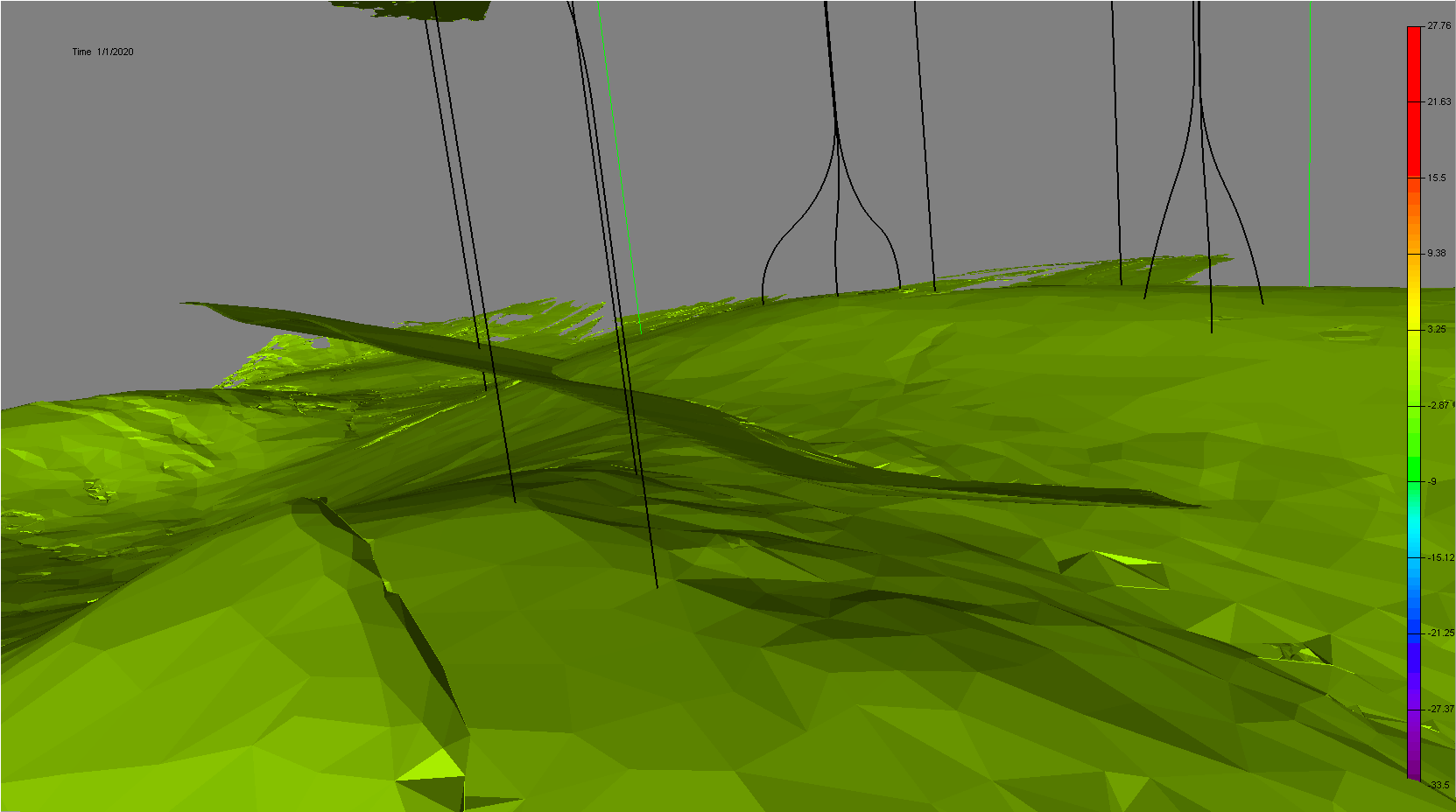SEAM LoF Project
The Life of Field project funded and managed by SEAM involves simulations of reservoir dynamics based on a real production scenario. The simulations will help to understand the value (or lack of value) of frequent 4D re-shoots. SEAM Life of Field data is generated for complex geology, complete reservoir description, and seismic. Reservoir dynamics are then simulated along with the resulting well and geophysical and geomechanical responses. The resulting data is used to estimate the ”inverse” problem of interpreting reservoir dynamics in a unique condition where everything about the reservoir is known.
Volume extractions
Surface mesh extraction was performed on the two turbidite reservoirs, as well as the salt formation. The surface extraction was performed by GeoWrap/WebSEGY, a tool which uses levelset algorithms on hexahedral cells to extract an initial surface mesh. The tool then uses proprietary scheme to optimize the surface mesh and bring to FEM quality.
Structural Models
The components of the geological model - the two reservoirs, the salt, the two faults, and the sea bed are put together, a bottom of the model is added and finally, a fence is created around the model. All the surfaces are then intersected to create a conforming surface model without gaps. After this step, the sea bed, the model bottom, and the model fence are put through the same mesh optimization algorithm used to create the remaining surfaces. The result is the final surface mesh of our geological model.
The computational mesh has 6490728 elements and the model has a total of 11254863 degrees of freedom (DOF).
Simulations
The reservoir simulations are performed for a period of 10 years, split in three phases designed to support specific geophysical objectives.

During the course of the project two distinct simulations with a fixed time-step were performed.